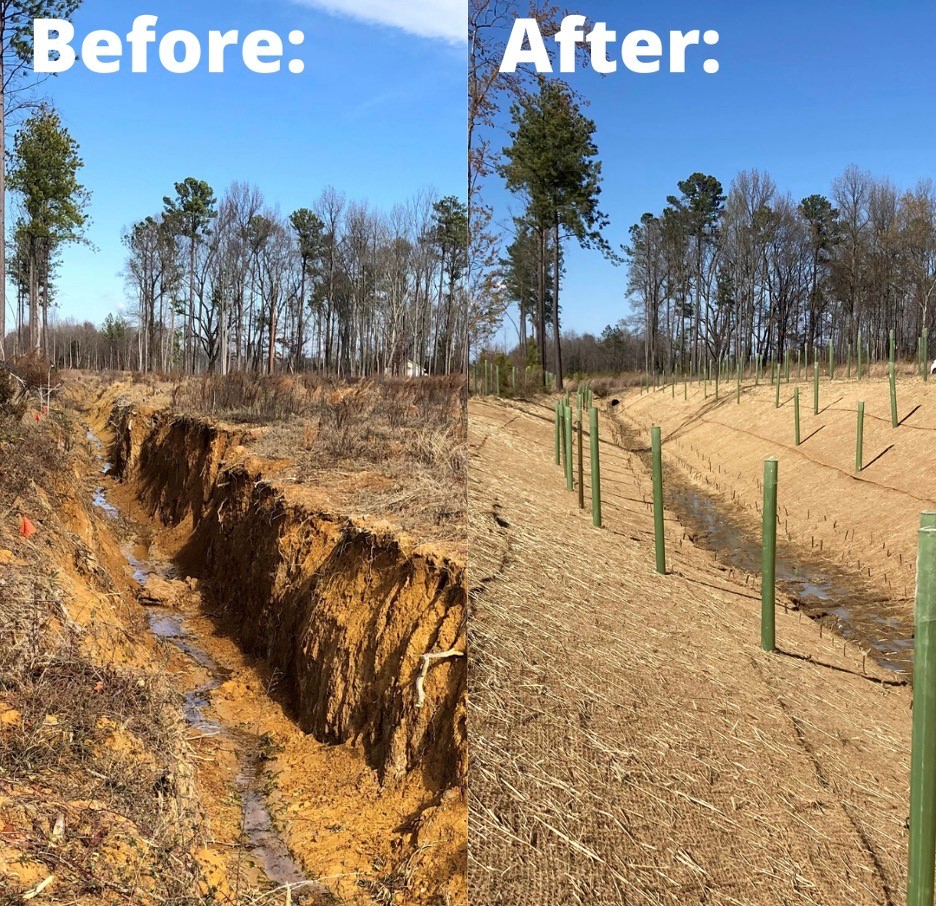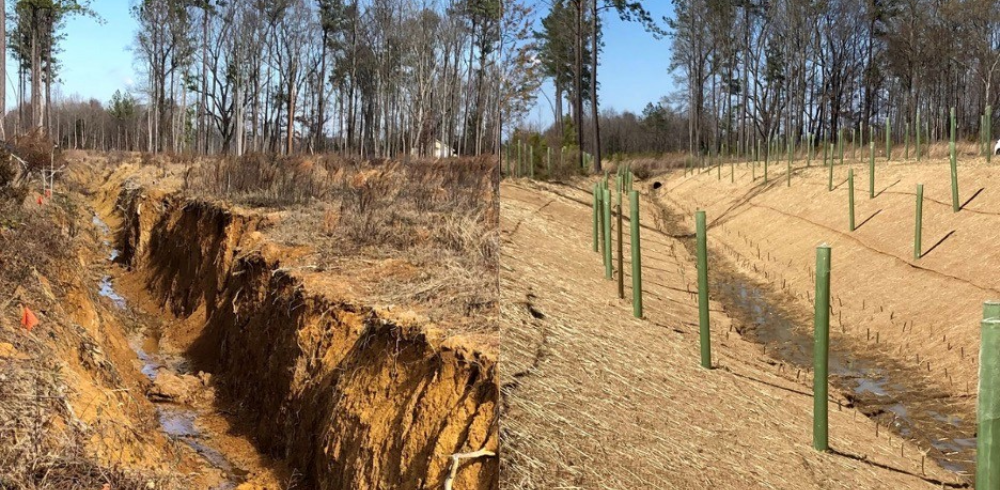James River Buffer Program and the James Riparian Consortium pitch in to help the Capital Region Land Conservancy restore a degraded waterway.
In 2021 an approximately 350 acre parcel of land, adjacent to Deep Bottom Park in Henrico County, was gifted to the Capital Region Land Conservancy (CRLC). CRLC is a non-profit organization devoted specifically to the conservation of land within the capital region. The land had been extensively harvested and replanted with loblolly pine several years before CRLC’s acquisition. The property is bound by several waterways, including Four-Mile Creek, the James River and Roundabout Creek. For CRLC, figuring out how to best manage this large conservation area has been both very exciting and somewhat daunting.

Ashley Moulton, Land Conservation Specialist with CRLC, identified water quality protection as one of the top priorities for managing the landscape. One of the troubling features on the parcel was a drainage ditch that had been deepened during the timber harvest to manage changes in water movement. Its steep banks meant that sediment, one of the most damaging pollutants of waterways and aquatic life, was easily flowing into Roundabout Creek and ultimately the James River. A plan was created that included regrading and stabilizing the sides of the waterway with coir matting and vegetation. Moulton’s next task was to secure additional funding to help pay for the project. Moulton reached out to coordinators of the James River Buffer Program. This grant funded program through the Virginia Environmental Endowment is meant to fill the gaps in riparian buffer establishment by offering flexibility and an easy application process. The program is managed through the James River Association (JRA), the Virginia Department of Forestry (VDOF) and the Chesapeake Bay Foundation (CBF).
The Virginia Department of Forestry’s JRBP coordinator, Deya Ramsden, along with local VDOF Foresters, was able to provide assistance with planning and funding riparian buffer creation and enhancement in several key locations on the parcel, including the troubling ditch. Riparian forest buffers are one of the less expensive yet effect means of protecting waterways. Tree roots anchor soil in place, leaf litter and ground cover help slow down over-land flow, and the polluting nutrients that may be traveling in run-off are taken up by the tree. For the bank grading portion of the project Moulton found assistance through a Riparian Forest Buffer Mini-Grant sponsored by the Upper & Middle James Riparian Consortium (Consortium). Funding of the mini-grant came from the National Fish and Wildlife’s Chesapeake Bay Stewardship Fund. The Consortium was initiated in 2019 by Amber Ellis, JRA’s Restoration Director, and partners, with the vision of ‘growing partnerships to create healthy streamside ecosystems for clean water in the James River today and tomorrow’.
As of March 2022, the project is complete. Within the regraded and stabilized ditch banks a total of 1,100 trees and live stakes were planted, along with a native wildflower seed mix. What was once a source of sediment to the James is now on its way to becoming a diverse, restored riparian corridor. This project will also serve as an educational opportunity for K-12, middle, and high school programing on healthy riparian buffers with Henrico County Public Schools who are currently working with CRLC on programs for environmental education and sustainability on the property.

